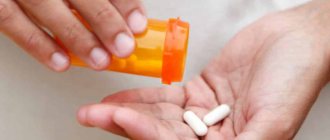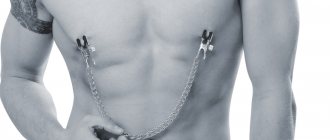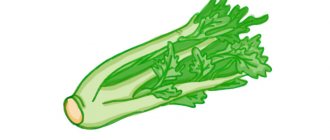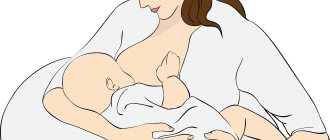Causes of lactation pain
Any disease of a woman can be easily transmitted to a newborn through milk, so the cause of the pain should be immediately determined.
The development of chest pain and pathological conditions of the mammary glands is facilitated by injury to the skin, a decrease in the body's defenses, and even the emotional state of the woman (apathy, depression).
Over time, the skin on the nipples will harden and the soreness will go away.
When breastfeeding, your breasts may hurt from:
- increased production of breast milk;
- constant milk flows;
- obstructed milk flow;
- flat or inverted nipples, when the newborn is not able to grasp the nipple normally;
- incorrect attachment of the baby to the breast;
- the appearance of cracks, abrasions, calluses on the nipples;
- postpartum restructuring of the body;
- thrush, manifested by a burning sensation and the appearance of a white coating on the nipples;
- lactostasis – congestion in the glands (the chest may hurt on the side);
- sudden refusal to feed;
- vasospasm - contraction of blood vessels, in which the nipples may turn white or blue;
- mastitis – inflammation of the mammary glands as a result of bacterial exposure.
You need to especially carefully monitor the condition of your nipples, because even the smallest cracks are an entry point for infections. This can provoke serious consequences: the appearance of pus, inflammation.
General advice for mothers when stopping lactation
Usually, after stopping breastfeeding, the breasts stop hurting after 2-3 weeks. If weaning occurred according to the rules and gradually, negative symptoms may not be observed at all. To complete lactation successfully and without consequences, it is recommended:
- Express regularly by hand or using a breast pump. In this case, you should not empty your breasts completely; it is enough to express until the condition eases. This principle will reduce the amount of milk in the breast and avoid stagnation.
- Eliminate from the menu foods that cause increased lactation: nuts, hard cheeses, meat, chicken eggs and warm tea.
- During the day and at night, wear a bra made of natural fabrics with wide straps that provide good support to the breasts.
- If the mammary glands continue to hurt severely, you can take medications with an analgesic effect (for example, Paracetamol or Ibuprofen). After all, the woman is no longer breastfeeding, which means you can take medications without fear for the baby’s health.
- Take sedatives. Novopassit, motherwort or valerian extract are good options.
- Apply cold compresses. Particularly useful is the application of a beaten (wet) cabbage leaf to the breast, which promotes the resorption of lumps, reduces pain, and also has an anti-inflammatory and cooling effect. You can also use ice wrapped in a towel. Keeping such compresses is allowed for no more than 10-15 minutes.
- Take herbal infusions that suppress lactation. The most effective are decoctions of sage, parsley and peppermint. To prepare the infusion, pour 1 tbsp. l dry herb 200 ml boiled water, leave for 30 minutes. Drink 0.5 cups of the prepared product 2 to 4 times a day.
Important! Before using medications, you should consult your doctor.
- Drink only cool water – warm and hot drinks increase milk flow.
- Take a cool shower daily.
- See a doctor immediately if your breasts become red and painful, or if your body temperature rises.
On a note! In most cases, milk production stops after one week unless the nipples are further irritated.
A breast pump will help make expressing breast milk easier
Lactation hormones
During pregnancy, the main hormone is progesterone. It ensures its healthy course and prevents premature birth. Currently, many women receive hormonal support through medications early after conception to avoid miscarriage or too early childbirth. The high level of progesterone in a pregnant woman’s body allows her to carry her baby to term.
During childbirth, the hormonal balance quickly changes towards a decrease in progesterone and an increase in hormones such as prolactin and oxytocin.
| prolactin | oxytocin | |
| main function | the main hormone influencing milk production during breastfeeding | hormone that initiates labor |
| influence on the female body | Often women who have problems conceiving, after undergoing blood tests, find that they have elevated levels of this hormone. Prolactin has the effective ability to suppress ovulation. Therefore, pregnancy becomes impossible. The vast majority of breastfeeding women experience no menstruation | no one knows exactly what causes labor to begin in the body of a pregnant woman. But the frequency and duration of contractions depends on the level of oxytocin. During childbirth, hormone secretion gradually increases, contractions become stronger. And when the cervix is fully dilated, a new person is born |
| effect on lactation | The amount of breast milk a nursing woman has depends on the level of prolactin. The production of the hormone is directly proportional to the active stimulation of the mammary glands by the child. The more often and longer the baby sucks on his mother’s breast, the more the secretion of prolactin increases, which means that milk will be produced in sufficient quantities for the baby. | Oxytocin is no less important during breastfeeding. As the baby begins to suckle at the breast, the secretion of hormones increases rapidly. Under the influence of oxytocin, the release of milk from the breast improves, and it easily enters the baby's mouth. |
Oxytocin has another important feature. During feeding, almost all women in the first days after childbirth experience quite severe cramping pain in the abdomen. This is how the uterus contracts, greatly stretched during the period of bearing the baby. Active secretion of oxytocin speeds up this process as much as possible and allows the young mother to avoid severe bleeding.
From the moment of birth, the body adjusts to the production of breast milk. There are 3 stages of lactogenesis. The first refers to the period 12 weeks before birth, when colostrum secretion begins. In the second stage, the transition from colostrum to first milk occurs. And then the production of the mature one begins. In any of these periods, a young mother may encounter certain difficulties, one of them is chest pain.
We suggest you read: Is it possible for pregnant women to take inhalations when they have a cold?
What not to do when weaning
Maybe mom will be able to carry out the weaning smoothly and gently. But it also happens that at some point the child begins to resist - this will happen if the pace taken by the mother turns out to be too fast for him. If at such moments the mother “puts the squeeze” on the baby, continuing to act according to her own plan without taking into account his reaction, then the most likely answer is a rapid rollback when, under pain of being deprived of the breast, the child “hangs” on her even more than before. Therefore, if the child reacts strongly negatively, it is better to stop, giving the child more time to adapt, rather than risk the entire path traveled.
Do not set specific deadlines , and especially do not choose a specific date when the child will already be weaned. If you are already set, but the child is not ready yet, someone will definitely remain dissatisfied, and stopping feeding should still occur by agreement of both parties.
You cannot wean your baby from the breast if he is sick or recovering from an illness; major changes occur in the child’s life - moving, entering kindergarten, mother going to work. If such a situation is planned, then weaning should occur several months earlier or later, so that the total volume of changes occurring simultaneously does not become too difficult for the child’s psyche.
Do not deny your baby the breast if he has clearly suffered a strong shock or emotional stress : he hit himself, got scared, his mother was away from home for an unusually long time, and so on.
One popular tip for weaning faster is moving away . But if the child is not used to being separated from his mother, then the disappearance of both mother and breastfeeding at once can have a very bad effect on the baby’s condition. And when mom returns, the baby may demand her attention even more persistently.
Applying something bitter (mustard) or scary (brilliant) to your nipples can burn or irritate the delicate skin of your breasts. And for a child this can cause severe stress. For your baby, the breast is the personification of confidence, calmness and kindness, and a “trouble” that happens to the breast can turn the child away from his mother and shake his ideas about the reliability of the home world.
Quite a lot is known today about the dangers of stopping lactation with the help of medications I will only add: when a child is about one and a half years old, the assumption that it is enough to take a few tablets and the child will stop feeding is completely unjustified. A baby of this age is no longer put to the breast to receive milk, but primarily to receive mother’s love. And simply the absence of milk will not cool him down. At the same time, sucking on a breast that has almost no milk gives the mother more unpleasant sensations than sucking on a milk breast. Therefore, the mother’s task is not to “remove milk”, but to reduce the number of times the baby latch. Milk production will decrease according to milk supply on its own.
Symptoms indicating pathology
You need to carefully monitor not only your breasts, but also your general health. After all, if after feeding your nipples and breasts hurt, then this may be considered normal, but if the situation is accompanied by an increase in temperature, then you need to consult a doctor.
Chest pain during feeding is pathological if it is accompanied by:
- Increasing temperature indicators. This may indicate lactostasis and the presence of congestion. Remember that a slight increase in values in the first days after birth is normal. A very high temperature indicates inflammatory processes in the chest and the spread of infection. It is important to distinguish hyperthermia associated with lactation from that caused by other diseases.
- Redness. This can be caused by mastitis, lactostasis, damage. In this case, one breast usually hurts and burns. The condition is very dangerous because it is accompanied by the spread of infection.
- Itching and burning. He points to thrush, mastitis. Do not scratch the damaged area. Contact your doctor and he will prescribe an ointment that will eliminate unpleasant symptoms.
- Swelling of the mammary gland, the formation of nodes and lumps.
There should also be no suspicious discharge from the nipples. The development of a purulent-inflammatory process leads to the appearance of mastitis.
When to go to the doctor
If lumps have formed in the chest and they cannot be dealt with immediately, you should consult a doctor. If the breasts turn red and the woman has a fever, then a visit to the doctor must be made without delay.
After a baby stops breastfeeding, milk may continue to be produced for a long time, up to three years. But if the discharge suddenly becomes brown, mixed with blood, then you must definitely consult a doctor and undergo an examination.
A meeting with a doctor is also necessary if, after 3 years from the date of cessation of breastfeeding, milk continues to be released, and this is accompanied by menstrual irregularities, infertility, and also if the color and nature of discharge from the breast suddenly changes.
Pain is least likely after stopping breastfeeding if the process was gradual. It is even better if self-exclusion has occurred, i.e. The child just outgrew it. But even if it is necessary to abruptly stop feeding, breastfeeding can be stopped without serious consequences for health, if everything is done correctly.
Starting breastfeeding
3-4 days after childbirth, the hormonal balance in the body of a young mother changes significantly. Under the influence of lactation hormones, the first milk comes in sharply. A nursing mother's breasts may not be ready for such a quantity. As a result, all lobes of the mammary glands become overfilled, and the woman feels that her breasts are greatly expanding from the inside.
This may also be accompanied by a feeling of pain. The baby's stomach is still very small and cannot accommodate a lot of mother's milk. In addition, newborns are very weak and are not able to suck on such breasts. To everything else, narrow milk ducts can be added. In this case, droplets of milk fat get stuck in the ducts, causing them to become blocked.
It is unacceptable to hesitate in such a situation, otherwise you can easily get lactostasis. And nutrition is vital for a newborn. What measures can be taken:
- Frequent latching of the baby is necessary. If your baby refuses to breastfeed and falls asleep, you should not let him sleep for a long time. You need to wake up and insistently offer the breast.
- If the baby cannot suckle at the breast, there is another effective way to help the young mother. It is necessary to warm up the mammary glands thoroughly. To do this, you can moisten a towel with hot water and apply it to your chest for a while. This method causes the mammary ducts to dilate and the mammary glands to relax. Often after such a procedure, milk itself begins to flow out of the full breast.
- It is advisable to be prepared in advance for the arrival of milk. Sometimes young mothers rarely feed their newborn and do not always have time to track the first signs of the onset of lactation. At this moment, the colostrum becomes cloudy and the first splashes of milk appear. If you notice such changes, you should spend as much time as possible feeding. When the baby is full, you need to try to express the excess milk. It is easier to do this immediately after feeding, while the oxytocin reflex is still strong enough.
Often at the very beginning of breastfeeding, nipples hurt after feeding. A newborn baby spends a lot of time feeding. The chest is usually unprepared for such loads. Every woman has special areas in the areola area called Montgomery tubercles. They produce an oily secretion and provide the nipple with the necessary softening and hydration.
If this problem occurs, you should often leave your chest open. This measure will allow injured skin to heal faster and calm down. It is imperative to soften the areola area with special products. Excellent results are achieved by using products based on pure lanolin. Such ointments remarkably soften damaged skin and heal cracks at maximum speed. Of course, it is advisable to start using them without waiting for problems to arise.
Often the answer to the question of why breasts hurt after feeding is the baby’s improper attachment. Even in the maternity hospital, you need to learn how to properly insert the nipple into the baby’s mouth. Experts will advise you on the correct application technique. Some women have the problem of flat nipples.
We suggest you read: How to push during childbirth, several rules for an easier birth
In this case, the newborn cannot capture a sufficient area of the areola, as a result of which the young mother has breast pain after feeding. If there is such a feature, it is necessary to purchase special pads even before giving birth. Using them will make it easier for your baby to latch onto the breast correctly. They will also be useful if cracks occur.
Natural involution of lactation occurs no earlier than the baby is two years old. Not all women are ready to feed a child for so long. Most people think about stopping feeding around the age of one. For some, lactation stops very early, and mothers are forced to switch their babies to artificial feeding by the age of three to four months of the baby’s life.
https://www.youtube.com/watch?v=628Tc87NjAA
However, there are women who are capable of very long and abundant breastfeeding. It is not easy for such mothers to complete breastfeeding. Therefore, it is advisable to slowly wean the baby from the breast, gradually eliminating one feeding after another. This method will allow you to complete feeding smoothly and painlessly.
But there are situations when you have to wean off the breast in one day. Weaning in this case may be accompanied by unpleasant symptoms. Most women experience quite a bit of breast pain after weaning. To make the mammary gland less painful, during abrupt weaning it is permissible to periodically express milk until it becomes comfortable. Under no circumstances should you express completely.
Many mothers with small breasts fear that they will not be able to feed their baby. Indeed, the capacity of the breasts is different for all women. But this does not affect breastfeeding at all.
Some young mothers do not accumulate milk at all between feedings, but produce it only in response to the baby's sucking. Such nursing mothers are not prone to any problems. But for many others, a lot of unpleasant surprises may await. Therefore, if chest pain occurs, you should pay close attention to it and take all necessary measures to eliminate it.
Weaning between one and two years: weighing the pros and cons
If someone decides to wean a child before the age of two, then the task ahead is not the easiest. Perhaps this is the most difficult time to stop feeding, because, on the one hand, the baby really needs the breast, on the other hand, he can already insist on his own.
Attempts to wean from the breast can meet with sharp resistance from the child or cause stressful reactions, because most children between the ages of one and two need to kiss their mother’s breast several times a day. Over time, this need becomes less. But just over time.
The need exists regardless of whether the mother is going to satisfy it or not. This is a property of the child, not the mother, and the mother, with her strong-willed decision, cannot make this need simply disappear. She won't go anywhere simply because her mother decided not to feed her. And if the mother refuses to satisfy this need, it begins to manifest itself in some other areas, most often with various neuroses, obsessive states, whims, hysterics, sucking on various objects, and other things in the same spirit. If the mother satisfies this need naturally, she gradually goes away. For example, most mothers notice that the number of feedings seriously decreases around the age of two years.
At the same time (if the child is not yet ready to wean), even an attempt to wean can have a very negative impact on the life of the family and significantly spoil the family climate. So, when you are planning to wean a child after a year, you should first of all decide why exactly the mother decided to wean.
Try writing down a problem that is bothering you on a piece of paper. For example, this is lack of sleep. Calculate how many hours a day you sleep in total. Write down possible solutions. You can sleep with your child during the day when he is sleeping (rather than trying to do cleaning or cooking). You can transfer the care of the child to your husband or relatives who are ready to help for a certain time, and during this time you can rest, and so on.
Consider carefully whether you want to wean the baby completely or whether you would be satisfied with reducing the number of feedings. In any case, the preferred course of weaning implies that the process moves gradually, under the control of the mother. And a sensitive mother at any stage can stop him or take a step back if this is suggested by considerations of the health and moral state of herself and the baby. When the child is ready for weaning, it can be carried out forcefully, in a few days; but if you are just thinking about this against the backdrop of frequent attachments, gradual weaning will take several months.
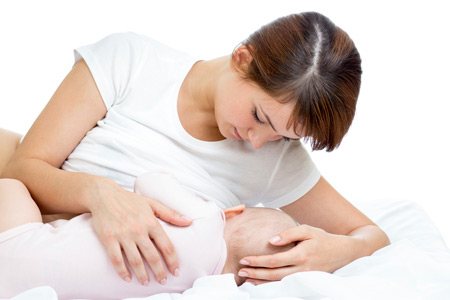
How to eliminate painful sensations?
If your breasts are swollen and painful, then you need to properly establish the lactation process. It is better to consult with a breastfeeding specialist before giving birth and master feeding techniques.
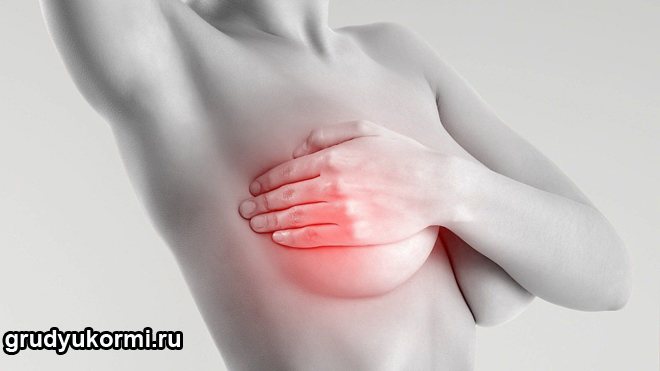
The mammary glands adapt to new conditions for 3 months after childbirth, so this period is the most important and difficult for women.
To normalize the feeding process, you need:
- Feed your newborn on demand (as often as possible). This way, the volume of milk produced will be naturally regulated, and you will avoid stagnation.
- Lightly massage the mammary glands before applying the baby.
- Change the position of the newborn before each new feeding. This will allow the baby to empty all the thoracic lobes.
- Regularly express with a breast pump if there is excessive milk production.
After feeding, apply cold compresses to your breasts; you can use a cold cabbage leaf or a regular wet towel.
Lactostasis is caused by rough manual expression, compression of the mammary glands, and long breaks in feeding. There may be a feeling of chest fullness. To get rid of this condition, apply the baby to the painful breast more often, massage it, use a breast pump.
If the cause of chest pain is mastitis, accompanied by purulent discharge from the nipples, you need to consult a mammologist. The doctor will prescribe an ultrasound scan and take antibacterial drugs.
Another serious factor that causes pain is candidiasis (thrush). A warm and moist environment on the nipples provokes the growth of fungal infections.
Fighting cracks
Cracks are a common consequence of HS. To prevent infection, you need to fight them.
The smallest cracks heal on their own. To speed up this process, arrange air baths more often and leave a couple of drops of milk on the nipples after feeding - it has a healing effect.
We suggest you read: How to take blood from a vein from a baby
It is important to apply the baby correctly so that when sucking, the nipple is captured along with the areola. If the lactation process is very painful and is accompanied by bleeding, purchase silicone nipple covers from the pharmacy. These shields are also used for flat and inverted nipples.
When weaning can be avoided
It happens that a mother wants to stop breastfeeding her baby for other reasons. They are closely related to the child’s behavior disorders and the characteristics of his upbringing. Then, often after weaning, problems in the relationship between the mother and her child do not disappear. On the contrary, the situation may even worsen.
Appetite problems
By the age of one year, the child should already be able to fully eat food from a plate. Breast milk remains an important addition to his diet. It does not lose its value and nutritional properties, even when the baby turns two, three years old and at any other period of his life.
But sometimes the benefits of breast milk are overshadowed by the opinion that feeding after a year is the reason for the poor appetite of the growing baby. Frequent sucking, “hanging” on the breast, partial or complete refusal of adult food worry the mother and make her think about how to stop breastfeeding. After all, the woman sincerely believes that completing lactation will solve the issue of decreased appetite.
However, before such an important step as weaning a child, it is worth understanding the cause of the situation. If an infant almost completely refuses complementary feeding, it is important to evaluate his hemoglobin level. To do this, you should take a general blood test. An obvious decrease in food cravings often accompanies anemia. In this case, weaning is dangerous for the child, because he will completely stop receiving nutrition. He needs treatment and his mother's milk will support him during the recovery process.
With normal hemoglobin levels, loss of appetite may be associated with a lack of interest in food or impaired eating habits. If such a baby is weaned, he may begin to eat out of despair. Or maybe not start. And not because he is being harmful, but because of the lack of a connection in his mind: “hunger - food from the plate.” These children need time to learn the rules of eating behavior. Mother's milk will give you confidence that during this period the baby will not remain hungry.

Frequent waking up at night
Sometimes the decision to wean a child at 1 year of age is related to the mother’s desire to finally get a good night’s sleep. There is an opinion that after feeding is completed, the baby will completely stop waking up at night. But that's not true.
Of course, a child can be taught to sleep all night long. And there are many ways to do this, but they are not always useful for the baby. Some parents actually notice an improvement in their baby's nighttime sleep after weaning. And other children continue to wake up at night. But before, the mother had a “magic” way of calming down - the breast. Now it will take more effort to rock, sing, and comfort the awakened child.
Mom goes to work
If a child of a working mother is over a year old, in her absence he safely eats regular food. And in the evening, at night and in the morning he is applied to the chest. This significantly enriches his diet and maintains health.
In addition, close contact with the mother during feeding helps the baby make up for the hours of separation. Even in case of a business trip, there is no urgent need to curtail lactation. And if you feel fullness in your breasts, you should simply pump it with your hands until you feel relief.
Child goes to kindergarten
Some kindergartens are reluctant to accept babies who are fed breast milk. It is believed that they are strongly attached to their mother and cannot do without her. And even more so to fall asleep on your own.
However, it is important to understand that breastfeeding a newborn and an older child are significantly different. At 1.5-2 years old, the baby usually already has experience of falling asleep without his mother.

Lactostasis
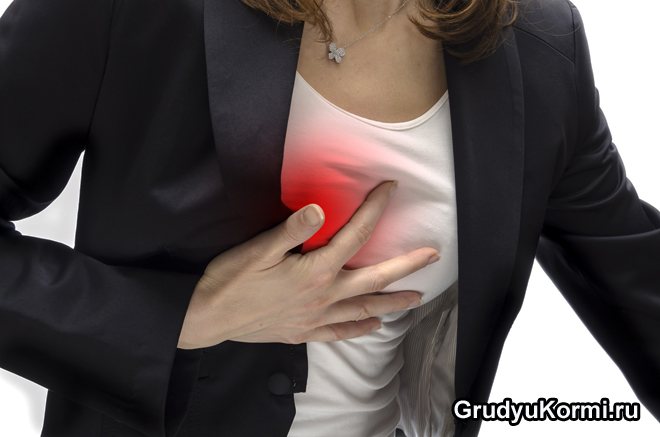
It is often possible to encounter the phenomena of lactostasis - a consequence of prolonged stagnation of milk - not only with the beginning of breastfeeding, but also with established lactation. This problem is usually caused by blocked milk ducts. In this case, milk is not able to enter the nipple. As a result, individual lobes become increasingly full, causing sharp pain in the chest after feeding.
As mastitis develops, body temperature rises rapidly and chest pain becomes especially severe. For treatment it is often necessary to resort to surgical interventions.
To expand the ducts, it is advisable to warm the chest well with the same hot towel. Then you need to try to completely express milk from the painful area, periodically massaging the breast for better flow of milk to the nipple area.
Also, after warming up, you can offer the breast to the baby, positioning it so that the baby’s chin is opposite the painful area. In general, you should feed your baby in a different position each time. There are many positions and options for feeding your baby. This approach will be an excellent prevention of milk stagnation.
Breast care when stopping breastfeeding
It is no secret that after stopping breastfeeding, the breasts begin to tingle and hurt: at such moments, a woman needs to be especially attentive to the mammary gland and follow the rules of prevention:
- Wet the gauze folded several times in cold water and apply it to the chest. It is better to use this method after pumping: when the milk ducts collapse (stick together), and the vessels in the gland narrow, the production of prolactin is suppressed.
- Do not take hot baths or showers in the first weeks after stopping guard.
- Wear a comfortable bra around the clock that fits your breasts tightly, but at the same time does not cause discomfort.
- Avoid positions that increase pressure on milk-filled breasts while sleeping. If a woman is used to sleeping on her side, you can place a cushion under her side so that her chest is slightly raised above the bed. Sleeping on your stomach is strictly contraindicated.
- Massage the breasts without touching the nipple part - rubbing in this area will provoke an increased secretion of milk.
- If the breast is very painful and red, and small lumps appear in the gland itself, you need to immediately make an appointment with a doctor.
If breastfeeding is stopped according to the rules and gradually, the risks of developing mastitis and lactostasis will be minimized. A slight pain at the end of lactation is a completely natural process: in order to relieve unpleasant symptoms, you need to continue pumping, but only until you feel relief. If, when the gland is emptied, the lumps do not disappear and an increase in body temperature is observed, you should consult a doctor.
Completing lactation is not as easy as it might seem. Why do many women experience breast pain after breastfeeding? Often, this is due to improper curtailment of lactation. Under no circumstances should you:
- stop feeding abruptly.
- on the advice of grandmothers, pull the sheets tightly across your chest.
- warm up your chest.
- Stop eating and drinking to reduce milk production.
- use hormonal drugs.
It is worth completing breastfeeding gradually, first reducing the number of daytime feedings, then leaving only nighttime ones. The body itself must get used to the fact that it now needs to produce much less milk.
Better yet, wait for natural involution, then there will be no problems with milk stagnation, and for the baby, saying goodbye to the breast will not be traumatic.
Prohibited actions for chest pain
During lactation pain you should not:
- Make your own decisions about taking antibacterial drugs, hormonal agents and other pharmacological products. Treatment must be prescribed by a specialist.
- Abruptly stop lactation. Refusal to breastfeeding can provoke a worsening of the situation, for example, with lactostasis.
- Continue to feed the baby if there is purulent discharge from the nipples.
- Apply warm compresses to the mammary glands. If there is an infection, heat will speed up the spread of bacteria.
To avoid complications, it is better to consult a doctor in a timely manner.
Lactostasis in a nursing mother, upon cessation of feeding and pregnancy: treatment with folk remedies

As you probably already understood, lactostasis is one of those diseases that are quite easy to treat. That is why, if you wish, you can try to cope with this problem using traditional methods. The most popular home treatment for this pathology is an alcohol compress.
DETAILS: Finalgon ointment - instructions for use, price, analogues
As a rule, it is applied twice a day in the morning and evening, and a bandage soaked in alcohol must be placed on the massaged breast. It is also believed that raw carrots have good anti-inflammatory and absorbent properties.
Yes, and remember, in order for carrots to have the maximum effect on your breasts, before applying the vegetable to the reddened areas, you will need to grate it on a fine grater and only then use it for its intended purpose. For even greater therapeutic effect, you can mix it with any internal fat of the animal.
Breast thrush

Fungi of the genus Candida are constant companions of every person. They can affect any part of the body, including the chest. Their activation is caused by decreased immunity and poor personal hygiene. The body of a pregnant woman is characterized by a particularly high level of progesterone, which is a favorable factor for the development of the disease.
Symptoms of thrush:
- change in nipple color;
- the presence of a wet condition;
- a red rash appears in the areola area;
- burning sensation of skin juices;
- Sometimes a white, cheesy coating may appear.
When thrush develops, breast pain may also appear after feeding. It is no less dangerous for the baby. Fungi feel great in a child's mouth. A humid, warm environment is ideal conditions for the active development of the disease. The baby's immune system is not yet strong enough. The risk of developing the disease increases.
Means for suppressing lactation
The pharmaceutical industry today produces many products that help improve lactation. There are also medicinal herbs and food products that help increase milk volume. But few people know that there are a lot of drugs that suppress lactation. These can be ready-made products purchased from a pharmacy and made individually for each woman. These drugs should only be used under the supervision of a qualified specialist. But there are also traditional methods that you can use yourself.
Medicines
There are many medications that a doctor can prescribe to suppress lactation, if indicated. These drugs are hormonal and do not have the best effect on brain structures. The basis of the action of all these drugs is the suppression of the activity of the hormone prolactin. Hormonal drugs inhibit brain function and lead to inhibition of its activity. These drugs must be taken over a course of two to fourteen days, depending on the drug chosen. Here are a few names of these drugs: dostinex, microfollin, bromocriptine, duphaston, carbegalin and others. All of them have a hormonal basis. The concentration of hormones in these substances varies, which explains the variation in the number of days required for administration. They can be used in tablets or in the form of injections.
These drugs have many contraindications and side effects, so they can only be taken after consultation with a specialist and only under his strict supervision. A specialist will help you choose medications that reduce the effects of these drugs. In particular, side effects of taking these drugs are nausea, vomiting, weakness, dizziness, fatigue, headache, and drowsiness. Depressive disorders often appear after taking hormones. They cause hormonal disorders. And often after taking these medications, it is necessary to take others in order to restore disrupted hormonal levels. It is also necessary to undergo a laboratory examination before taking these drugs. Therefore, it is better to avoid the use of these drugs and use safer substances to suppress lactation.
You also need to know that long-term non-absorbing lumps in the mammary glands and long-lasting pain can be symptoms of mastitis. Mastitis is a purulent inflammatory process in the tissues of the gland. If a woman is overcome by doubts about this, then it is necessary to address these complaints to a specialist. If mastitis appears, you must carefully dispense with it and do not refuse to take antibacterial drugs if the doctor considers it necessary to take these drugs. Very often, mastitis is an indication for taking these drugs and suppressing lactation.
Folk remedies that can be used to stop the formation of breast milk
Before the era of hormonal drugs, a woman could use various medications that have a diuretic effect during the period of completion of breastfeeding. These drugs increase the flow of unnecessary fluid from the body. But medications cause significant damage to the body. Therefore, during the period of completion of breastfeeding, traditional medicine can be used. This knowledge has been accumulated over centuries. Since ancient times, women have used them for their own purposes. Unlike medications, medicinal herbs have a mild lactation-inhibiting effect and have virtually no contraindications.
You need to set yourself a goal: to get rid of excess fluid in the body, which helps to stop lactation. The following medicinal herbs have a diuretic effect: bearberry, common basil, common lingonberry, elecampane, garden parsley, madder, horsetail, sage, cinquefoil erect, belladonna officinalis. These herbs can be purchased at any pharmacy. You should start taking herbs on the first day and drink them for a week. But if this is not enough, then you can increase the number of days for taking it. After about three hours from the start of treatment, the hot flashes stop, and after six to seven hours the breasts become softer.
Of these herbs, the best remedy is sage. One of the beneficial properties of this herb is inhibition of lactation. For these purposes, prepare a decoction at the rate of 1 tablespoon per glass of water and take 2-3 times a day. Herbalists claim that two to three days are enough to suppress lactation. Sage also has a healing effect on a woman’s body, treats infertility and has a general strengthening effect.
But lactation can resume within another six months. If resumption of lactation occurs after this period, it is necessary to seek advice from a specialist, as this may be symptoms of various diseases.
Today there is a lot of information on how to increase lactation with the help of proper nutrition and folk remedies. Much less often they talk and write about how to stop milk lactation.
The need to stop lactation arises for various reasons - the child himself has given up breastfeeding or has reached a certain age and the mother decides to stop breastfeeding. There may also be situations where there is a forced or sudden need to stop breastfeeding - most often for medical reasons.
The period of completion of lactation can be quite difficult for many women. Hot flashes cause discomfort and pain in the chest area. How to stop lactation quickly and with minimal losses? Many young mothers ask this question.
In this article we will talk about how to stop lactation, about traditional methods and about pills that stop lactation.
Preventive actions
To prevent pain during feeding, it is recommended:
- Put your baby to your breast more often. This will allow for uniform milk production and avoid stagnation.
- Do not take the baby off the breast. Wait until the sucking reflex stops. If you need to finish the feeding process, put your clean finger into your baby's mouth and gently pull out the nipple.
- Wear a bra that fits properly and choose models made from natural materials.
- Learn and master the correct technique for pumping and latching your baby. When the nipple is grasped correctly, it is located deep in the mouth. This way the baby will not be able to injure the breast.
- Maintain breast hygiene. They do not need to be washed very often; this removes the protective lubricant and dries out the thinnest skin. Do not wipe your nipples with a towel - it damages the skin. If necessary, lubricate the nipples with special products.
- Avoid letting the baby fall asleep while feeding and using the nipple as a pacifier.
It is especially important for the chest to ensure access to air. Therefore, walk around the house with your chest bare more often.
What to do with your breasts after weaning
Tips from Nadia Eisner, leader of the International La Leche Dairy League
What to do and what not to do with your breasts during weaning?
1. After six months from the birth of a child, there is no point in taking hormones. Milk is produced based on supply and demand rather than for hormonal reasons. If demand falls, the quantity of milk decreases until it disappears altogether.
2. There is no point in bandaging the chest. For relief, just wear a good bra. Breast ligation does not prevent the flow of milk and can lead to complications.
3. What to do? first of all, wean gradually, that is, if you had 3 feedings, remove one, after a week or at least 2-3 days the second, and then the third. If this doesn’t work out, you’ll have to pump more often, that’s normal. There is no need to be afraid to express. You will see for yourself that the amount of milk you express is decreasing day by day. Express only until you feel relief.
4. After pumping, apply a cold compress. The completion process may take several days, a week... This is normal and least traumatic for the breast.
5. If the chest hurts a little, but is soft, this means that there is no congestion, but everything is a little inflamed. mild inflammation is relieved by cold, preferably deep cold, such as frozen chicken, or just ice in a towel.
You can also apply cold leaves of regular cabbage. keep on the chest until it becomes limp and boiled.
6. There are herbs that reduce lactation: peppermint and sage. Boil and drink 5-6 glasses a day.
7. If you know that a certain product or a large amount of liquid can trigger your milk supply, of course refrain from this during weaning. If a hot flash does occur, follow the instructions: express until relief occurs, apply cabbage and a cold compress.
8. If you notice compaction, redness, and the temperature rises, these are truly alarming factors. treat this like incipient mastitis.
————————————————————————————————————————————————————————————- ————————————————————————————————————————————————————————————-
Write about the difficulties you encountered when curtailing lactation. How did you deal with them?
Or you can write your own hassle-free story. Your experience will be useful to other mothers.
Ask questions and discuss.
That's what this topic is for. Editat August 27, 2010 de kotea motea
By what signs can one determine that involution of the mammary gland has occurred?
- According to the timing of lactation. Involution does not occur until the child is 1 year and 3 months old. With normal lactation, it usually occurs at 1.5-2.5 years, and with the onset of the next pregnancy or in case of hormonal disorders in a woman, it can occur earlier - in a period of 9 months to 1 year and 2 months.
- Due to physical fatigue that occurs after feeding. If the mother is ready to end lactation, then during feeding she begins to experience extremely unpleasant sensations, and after feeding she feels weak and drowsy, sometimes she cannot immediately get out of bed, and if she gets up, she may experience dizziness and even fainting. In addition, sore nipples occur.
- According to the child's high sucking activity . This is due to the fact that the baby has already become big, and the milk supply has become significantly less. Therefore, the baby tries to stimulate lactation by extremely frequent breastfeeding, as well as by alternately sucking on one or the other breast during one feeding.
- Due to psychological fatigue . Just don’t confuse a woman’s true psychological fatigue, which is associated with the child’s irrepressible sucking activity, physical fatigue and sore nipples, with the desire to stop lactation before nature’s due date. Weaning must be done “by mutual agreement” between mother and baby. Trying to rush things can be bad for both.
What should you not do when completing a GW?
There is a whole list of precautions that a woman must take into account when deciding to wean her baby. So, the main ones include:
- Breastfeeding should not be stopped suddenly, as this will be a serious stress for the fragile baby.
- In order to wean a child, you should not leave him for a long time. This can have a bad effect on the psycho-emotional state of both mother and baby.
- Under no circumstances should you tighten your breasts in order to reduce lactation. Such actions can lead to swelling of the mammary glands, as well as the development of lactostasis and mastitis.
- You should not smear the nipples with brilliant green or mustard, so that the baby no longer wants to take the breast.
- You should not leave your breasts unexpressed, as this will contribute to the formation of congestion, which will ultimately lead to lactostasis and mastitis.
Thus, the issue of stopping breastfeeding should be approached with all responsibility.
It is also recommended that you consult a lactation specialist first. The process of completing lactation should be as smooth and painless as possible for both the baby and the mother.
